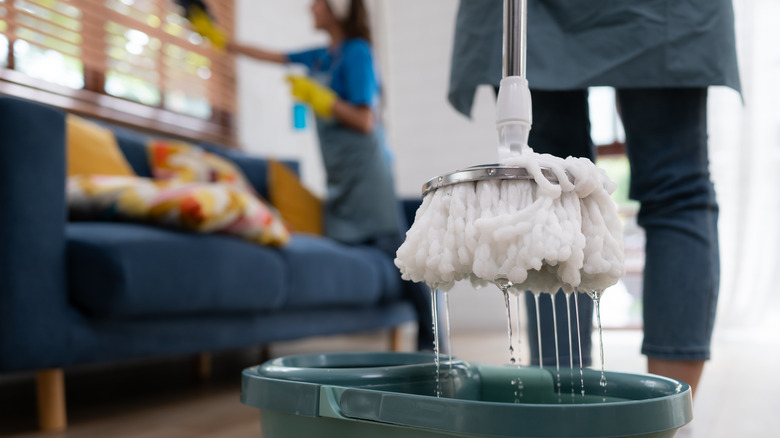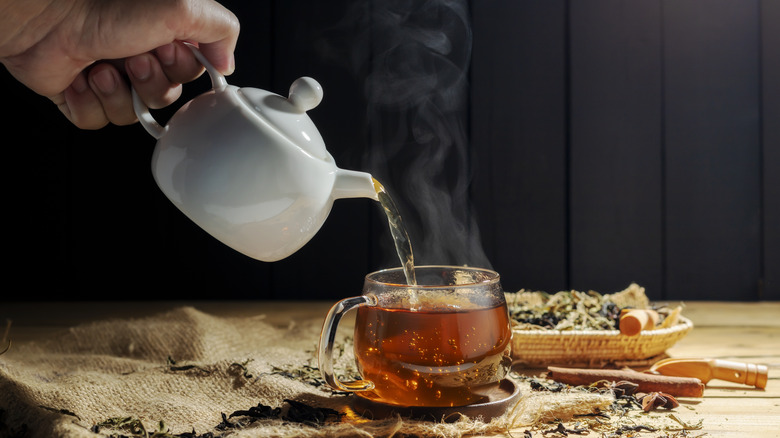Give Mop Water A Fragrant Boost With A Grocery Store Staple
Cleaning is usually about what you see, but what you don't see — the faint smell and the lingering atmosphere — makes all the difference. You've scrubbed and mopped, yet your room smells like a hospital corridor instead of a home. Unfortunately, some floor cleaning products can leave behind an artificial, overpowering fragrance that clashes with your space. But what if your mop water could smell like calm mornings or cozy afternoons instead? What if cleaning didn't just make your space look fresh, but feel fresh, too? You can achieve this by adding one secret ingredient to your mop water, and that's your favorite herbal tea. Yes, the same tea that lifts your mood in a mug can lift the energy of your entire home.
Herbal teas like lavender, mint, cinnamon, and rosemary are natural deodorizers and can serve to neutralize odors. The gentle oils and plant compounds in tea leave behind a clean scent on your floors. Plus, some herbal teas have antibacterial and antimicrobial properties. This means you can wipe away germs without the harsh chemicals. It's an affordable and sustainable method that somehow makes a mundane chore an act of care for yourself and your home.
How to safely use herbal tea for long-lasting freshness
Start by steeping your homemade herbal tea or store-bought teabag (think calming chamomile or refreshing mint) just like you would for a cup you actually want to drink. Once it's brewed, pour it into your mop bucket. If the water is still piping hot, top it up with a little cool water so it's comfortable for mopping. Then dip your mop in, wring it out just enough to avoid puddles, and glide it over your floors. Almost instantly, your space will smell fragrant.
Note that most herbal teas are acidic in nature. So, if you're thinking of mopping with tea liquid, porcelain, ceramic, and PVC vinyl flooring are your safest options because they can handle acidic liquids well. However, sensitive surfaces like marble, limestone, or natural stone may react poorly, especially when it comes to strongly acidic teas like black tea and certain fruit teas.
To be on the safe side, stick to milder, neutral teas for these areas to keep your floors happy and shiny. You can gauge how acidic your tea is by looking at its pH level. Anything close to seven is considered neutral, and below four indicates high acidity. Use your chosen safe herbal tea to keep your floor looking like new and pleasantly fragrant. It's a simple swap that's low-effort but pays off big.

